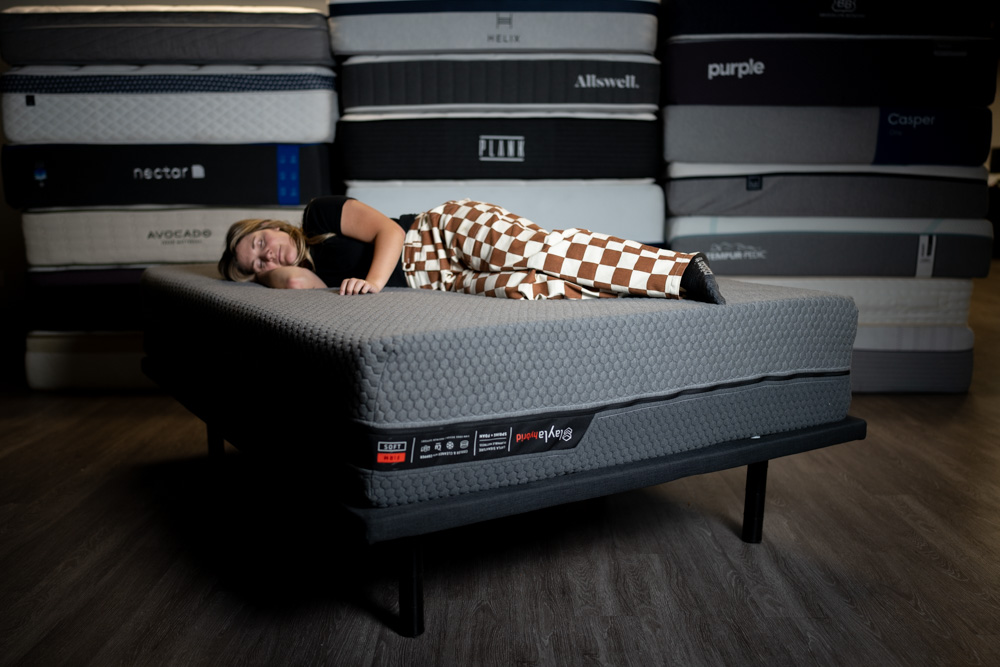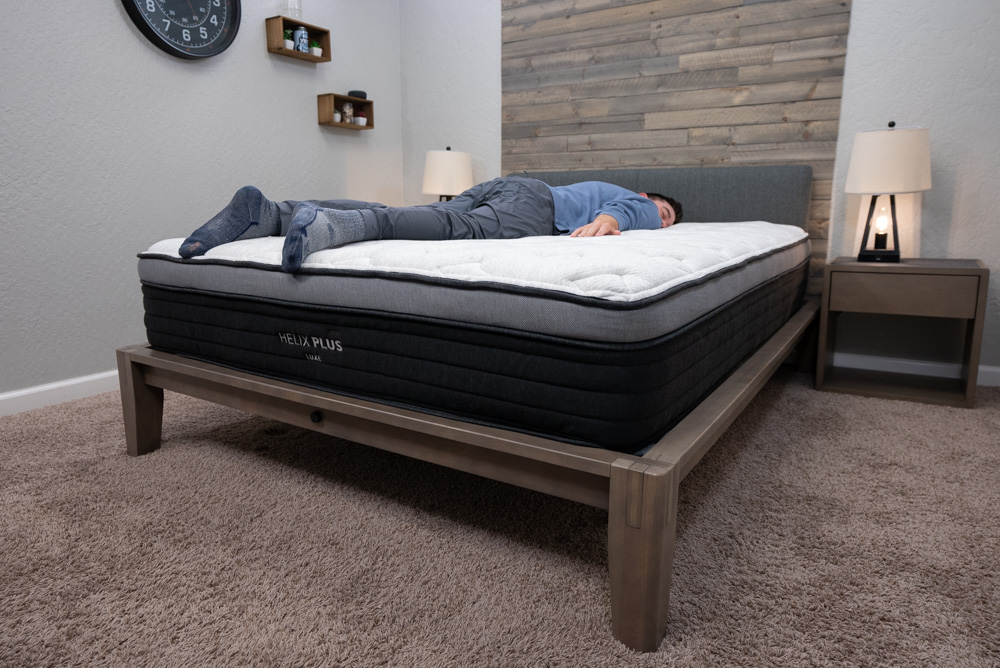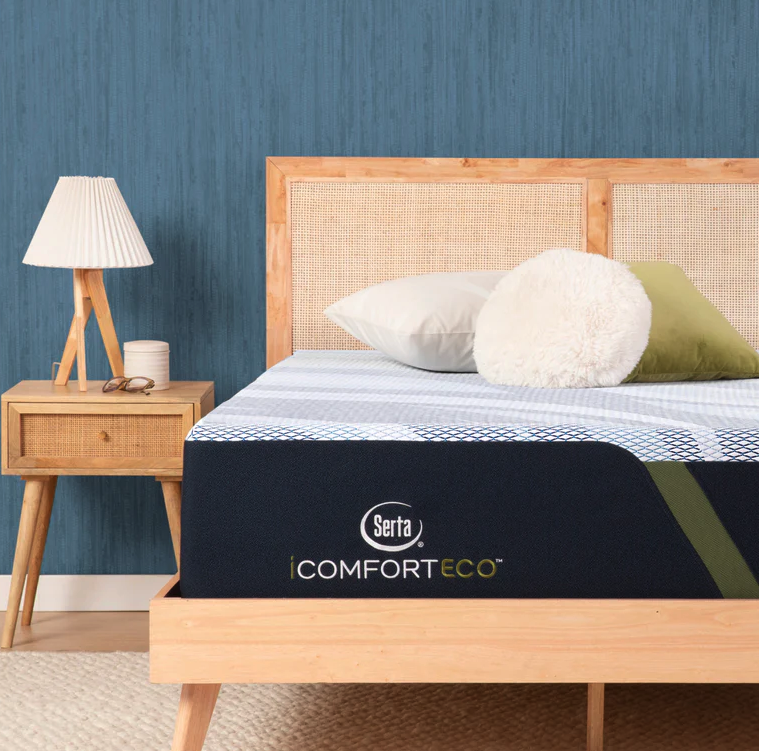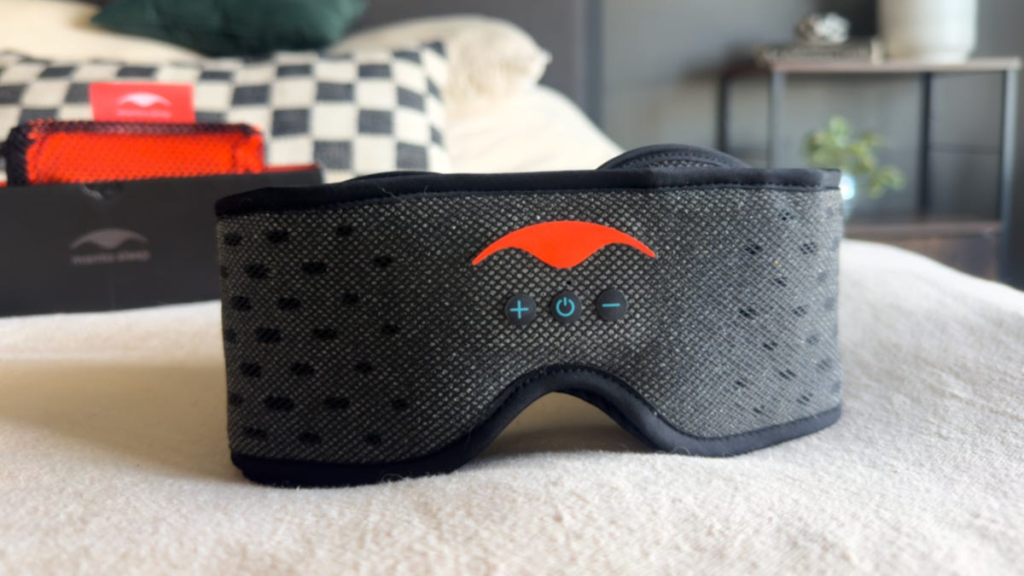Nectar
Save up to 50% off mattresses + spend $1,000 and save $100

Layla
Up to $200 off mattresses + 2 free Layla pillows

Helix
25% off sitewide + free bedding bundle with a Helix Luxe or Elite mattress purchase

Serta
Save up to $800 off select mattresses and adjustable bases
Our Verdict
Best for:
In a world full of high-tech sleep gadgets — white noise machines, specialized headphones and everything in between — it can be overwhelming to figure out what truly improves your sleep. As someone who struggles with light sleeping, I decided to put the Manta Sound Sleep Mask to the test. With its Bluetooth connectivity and a price tag nearing $150, I was curious to see if this innovative sleep mask could deliver the restful nights it promises.
Watch me test the Manta Sound Sleep Mask with an afternoon nap.

Ready to replace that mattress? Score huge savings on great mattresses with these Black Friday discounts.
See now
What is Manta Sleep?
You may have come across Manta Sleep on Instagram or TikTok, as it’s quickly grown in popularity. The original Manta Sleep Mask has more than 13,000 reviews on Amazon alone, and the brand says it’s helped over a million people improve their sleep.
Manta offers a variety of sleep masks at various prices, ranging from $35 for the original sleep mask to a $69 silk mask. It also offers therapeutic options, such as weighted, cooling or steaming eye masks. Additional sleep accessories and products, such as blue light glasses, earplugs and travel pillows, are also available.
The mask’s technology is straightforward and easy to use.
Will this mask solve my sleep problems?
My bedroom has large windows and sheer day shades only, so quite a bit of city light shines through at night. While this does not bother my husband, it keeps me up. Before buying and installing blackout curtains, I wanted to see if a blackout sleep mask would help.
I’m also a light sleeper and wake up to the slightest of noises, whether it’s my cat purring, cars honking or our neighbor’s TV. Masking those extraneous noises with sleep headphones seemed like a no-brainer.
This led me to try the more expensive Manta Sound Sleep Mask, which costs $143. In addition to supposedly being 100% blackout, this sleep mask has built-in razor-thin headphones. You can connect to your phone or another device by Bluetooth and listen to music, podcasts or calming sounds. This mask was specifically designed with side sleepers in mind, which is another perk for me because I sleep primarily on my side and stomach.
Initial thoughts on the Manta Sound Sleep Mask
The mask is comfortable. Its eyecups are cushioning and spacious, keeping my eyelashes from squishing against the mask — something I don’t like about other sleep masks I’ve used. The adjustable velcro strap allowed me to wrap the mask snuggly around my head, and it didn’t seem like it would slide around much (at first).
This sleep mask is completely adjustable and extremely light.
It’s also surprisingly light and thinner around the sides than expected, and the materials feel high-quality. After trying it on and reading the instructions, I plugged the mask in with its accompanying charging cable until it reached a full battery, which took about 2.5 hours.
How did I sleep with the Manta Sound Sleep Mask?
I’ll be the first to say it: I am not good at sleeping. My sleep latency, or the time it takes to fall asleep, is typically pretty high. It takes a while for my brain to quiet down and allow me to relax fully. I also tend to wake up four to five times a night, sometimes more.
The Manta Sound Sleep Mask has c-shaped eyecups for side sleeping comfort.
I connected to the mask’s Bluetooth with my phone and was finally ready for the first night of testing. I selected a brown noise soundscape from the Calm app and adjusted the speakers with the sliding blue tab on the sides. The audio quality was impressive. It gently floated around my head, seemingly coming from everywhere and nowhere at once.
I turned the volume down to a comfortable low level and I could still hear noises around me, including the air purifier running in the corner of the room, but they were faint and sounded far away. The last thing I remember is asking my husband if he could hear the sounds coming from my mask (he couldn’t, by the way), and then I drifted off into a peaceful slumber. If my husband snored or my cat purred on my head that night, I didn’t notice.
It has convenient sliding tabs for adjusting the speaker placement.
Either I took it off unconsciously, or the mask slid off at some point because it was lying next to me when I woke up. It didn’t seem to matter, though — I still slept great. It only took a few minutes for me to fall asleep, and I didn’t wake up until the next morning, 6.5 hours later. Thanks to its airy design and perforated materials for ventilation, I never felt too warm with it wrapped around my head, which surprised me.
I didn’t charge the mask right away because I wanted to test its battery life, and it lasted nearly three sleeps before dying at some point on the third night. The second and third nights with the sleep mask were similar to the first: I fell asleep quickly and spent much less time awake than usual. The mask was always off when I woke up in the mornings, and I have yet to determine whether that’s because I take it off while I’m asleep or if it slides off by itself when I move around and switch positions.
Did the Manta Sound Sleep Mask pass the nap test?
Manta Sleep proudly promotes afternoon napping. Its website states, “It’s impossible to unlock your full potential if you’re not getting an afternoon nap every day. Everything we do is fueled by our drive to enable better lives through better sleep and regular naps.”
I can count on one hand the number of afternoon naps I’ve taken in my adult life. Don’t get me wrong — it’s not that I don’t feel sleepy in the afternoons. I do. That afternoon slump often hits me like a ton of bricks, but I usually opt for another cup of coffee to get me through the rest of the day. Feeling inspired by Manta’s pro-nap stance, I decided to give it a shot.
On a sunny Monday afternoon, I prepared for my first power nap in years. I left the window and shades open in the bedroom, letting in all the natural light and outside noise possible to test the mask’s blackout effectiveness and sound-masking abilities. I selected a playlist of relaxing sounds on the Calm app, set a 20-minute timer and put my phone in “do not disturb” mode.
Testing the sleep mask’s blackout effectiveness in broad daylight.
I fussed with the mask for a while, trying to fit it properly, but I could still see a sliver of light coming through the bottom of the eyecups. I decided it wasn’t enough to bother me, but it’s worth noting that I wouldn’t consider it a complete blackout effect in full daylight.
Heading into the nap, my mind was busy sending unsolicited reminders of all the other tasks I should have been doing instead: walk the dog, run that errand, do those dishes, send that email — you know how it goes. With relaxing rainfall sounds and meditative music surrounding me, I took a few deep breaths and eventually drifted off to sleep.
After what felt like only a couple of minutes, I woke up to my phone alarm. The nap test was a success. The mask kept me from being tempted to open my eyes and scroll on my phone, and the gentle music kept away most of the extraneous noises from the outside world. I woke up energized and ready to continue the day.
Washing the Manta Sound Sleep Mask
The Manta Sound Sleep Mask is machine-washable. This is a great feature, especially for people with sensitive skin who need a sleep mask that they can wash easily and regularly to avoid potential irritation or breakouts.
The mask is machine-washable and comes with a mesh bag.
The sleep mask has simple care instructions. To wash it, I detached the outer layer and put the inner strap (without headphones) and eyecups into the mesh carrying pouch that comes with it. I machine-washed them in cold water and laid them out flat to dry fully, which took about 12 hours for the eyecups and less time for the strap. If needed, you can also spot-clean the outside layer of the mask with a damp cloth, but it’s important not to put that piece in the washing machine due to the speakers and Bluetooth technology.
Refund policy and warranties
My main qualm with the Manta Sound Sleep Mask is that the velcro strap on the back doesn’t hold particularly well, and I worry it will lose its stickiness quickly (especially after washing regularly). I read online reviews from others who experienced this, as well.
The straps of the mask are adjustable, but the velcro’s grip was not super strong.
Fortunately, Manta Sleep offers a 60-day money-back guarantee, a six-month warranty for non-electronic products and a one-year warranty for electronic products, so replacement straps should be an option. Manta Sleep’s customer support seems to respond quickly to complaints and questions on social media, which is a good sign. It also offers free shipping for all orders within the US.
Final thoughts on the Manta Sound Sleep Mask
I am pleasantly surprised by how much I’ve enjoyed the Manta Sound Sleep Mask. It’s been a positive addition to my sleep routine, and I look forward to wearing it at night. I’m excited to mix and match Manta’s various eyecups and straps.
I also read several customer reviews about wearing the Manta Sound Sleep Mask while flying — something I hadn’t thought of but can’t wait to try on my next trip.
You should try the Manta Sound Sleep Mask if:
- You want to listen to music, podcasts or soothing sounds without disturbing your sleep partner
- You sleep primarily on your side
- You are looking for a comfortable, machine-washable sleep mask
- You want a sleep mask with long-lasting battery life
You should skip the Manta Sound Sleep Mask if:
- You require complete and total darkness to sleep
- You constantly toss and turn while sleeping
- You don’t care about listening to music or sounds while sleeping
- You’re looking for a budget sleep mask
Read the full article here
